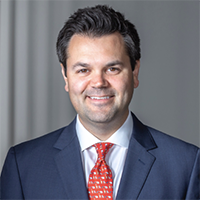
Keys to Serving ‘Risky’ Businesses
Brought to you by Dickinson Wright

Most banks focus on taking deposits, making loans and providing many other services for their retail and commercial customer channels. Recently, some institutions have opened their doors to riskier businesses – in particular, cannabis businesses. Banks that navigate those spaces successfully can offer lessons to other banks.
Failing to Prepare Is Preparing to Fail
The first and most important theme is extreme preparation. Before actually providing services to risky businesses of any kind, banks need to consider and prepare for the enhanced expectations of regulators and shareholders. Banks also need to appreciate where they may stand with the regulators, addressing any outstanding issues before going further.
Ahead of any conversation with regulators, bank executives should develop plans that cover the institution’s staffing, existing and future expertise, development of policies and procedures, compliance considerations, use of third parties, regulatory notices or approvals, market dynamics, growth expectations and ongoing risk management.
Regulators will want to understand how serving risky businesses fits into the bank’s strategic plans and will expect the board to have robust discussions that are especially focused on risk management. Regulators are particularly skeptical of new business lines that increase risk to the bank, its customers and ultimately, the deposit insurance fund. Bank executives should anticipate receiving heightened scrutiny of their plans for serving risky businesses.
Talk to Your Regulators
Talking to regulators about servicing risky businesses is really a bank’s second step. First, the bank needs to prepare to talk to them.
Executives and the board will need to do their homework to support their reasoning and analysis; they will need to demonstrate to regulators what the institution has already done and plans to do from a compliance, risk management and operational perspective.
Regulators will want to see details fleshed out in as much specificity as possible. Due to the increased risk and expectations in these areas, they may take the position that expanding into these business lines represents a change in the general character of the bank’s business, which may require specific filings or approvals from regulators. In any event, it is critical that executives have discussions with regulators before going to market.
Robust, Ongoing Risk Management
The third theme is robust and ongoing risk management. Risk management is a key element of bank examinations, often hammered home by examiners who want to provide a clear signal of their expectations. This is especially true with any bank seeking to provide services in riskier business areas.
It’s not enough to dust off old policies and add in the applicable key words for the new business. Banks need to tailor their policies and procedures to the specific businesses they’re looking to serve, including the flexibility for growth.
What many banks already understand is that regulators want to see a risk management framework that is tailored not only for the existing business, but more importantly, a framework developed to address the growth plans of the business lines. The framework needs to be robust in its current state and from a forward-looking standpoint: Is your bank’s risk management framework appropriate for today and tomorrow?
Patience
The final theme should come as no surprise: Patience is paramount for banks as they plan to engage with risky businesses. There is an extended timeline to work through; it will probably take longer than expected to work through details with regulators and seek necessary approvals. And it will certainly take time to develop and exercise the appropriate risk management framework that is flexible enough to address not only the current business, but also what the line of business might look like in the future.
These four themes are critical for any bank board and management team to consider and appreciate if they’re interested in working with risky businesses. Given the heightened risk, these conversations need to start in the boardroom, but there are many opportunities for those banks willing to put in the time and effort. These business lines are clearly not for every institution, but these themes apply to almost any new line of business – whether or not it might be considered risky.
This piece was originally published in the second quarter 2023 issue of Bank Director magazine.


